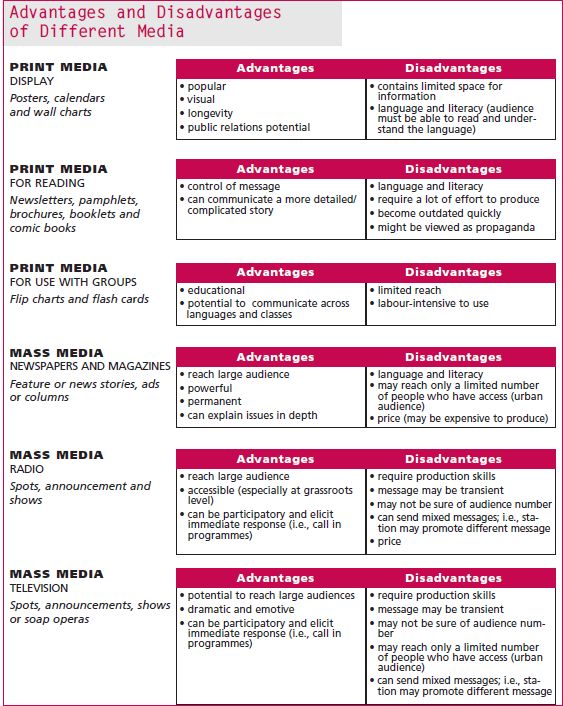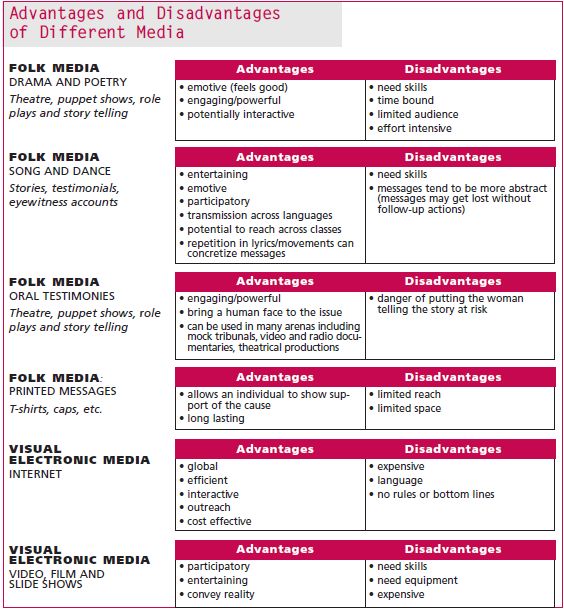A deliberate media strategy is needed to identify and effectively use appropriate media.
Crafting the media strategy should follow the steps of strategic planning as outlined in Campaign Planning and Campaign Strategy: conducting a situation analysis, defining clear goals, planning action, and deciding how to monitor the process and outcomes of the media strategy. The analysis should include a thorough mapping of the media environment, to review existing media and identify the communication channels which are most likely to reach each of your target audiences or audience segments.
Elements of the media environment include:
- Communication channels
- Quantity and quality of media outlets; type of media outlet
- News cycles: 24-hours (like the BBC or CNN), daily (many newspapers), weekly, monthly (many magazines) etc.
- Popularity; levels of readership or viewership
- Types of readership or viewership (e.g. age group, education level)
- Levels of access by target audience(s)
- Ideological or other leanings (e.g. media that adopt a certain religious leaning, or that are for/against a particular political party)
- Non-traditional media outlets: new mediums (e.g. online news sites, blogs), alternative media (not mainstream, NGO-led, including community media outlets)
Practical tips to identify which media you need to target
Consider the following factors:
- Circulation and audience ratings – i.e. the number of people who use the media (find out from the newspaper, TV or radio station concerned) or check external ratings agencies (Nielsen, etc)
- Readership or audience – i.e. the types of people who use the media (find out by watching the media – generally it is easy to understand which audience they target)
- Track record – do they have a good reputation with your target audience? Talk to representatives of the audience to find out.
Consider the advantages and disadvantages of different types of media:


Source: Making a Difference: Strategic Communications to End Violence against Women, UNIFEM, 2003.
Over the last decade, electronic media such as the internet have revolutionized audio-visual campaigning, cutting costs and enabling “viral” (i.e. rapid and uncontrolled) spread of images and sound. Please refer to the section on e-campaigning for information on using the internet, mobile telephone and other electronic tools in campaigning.